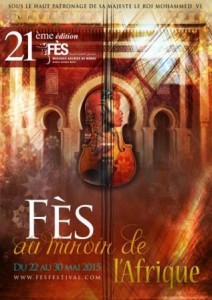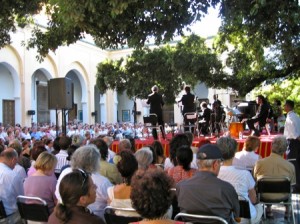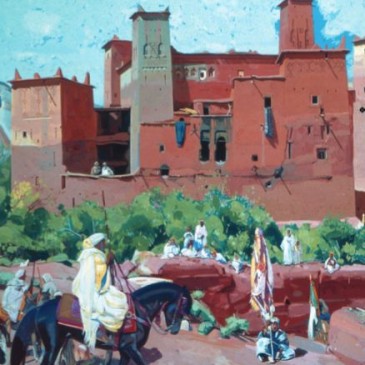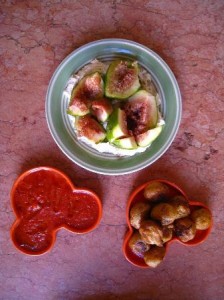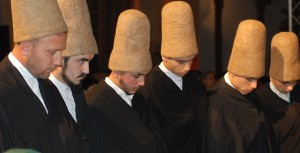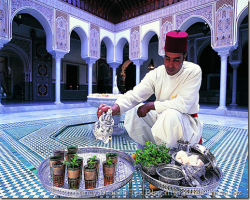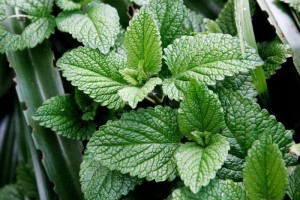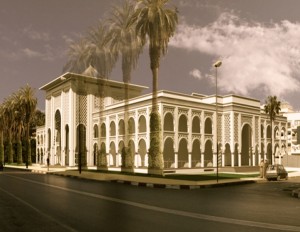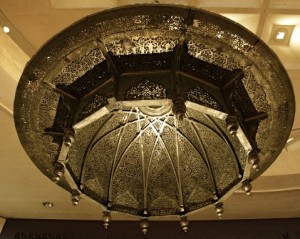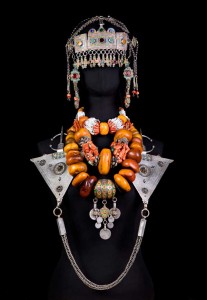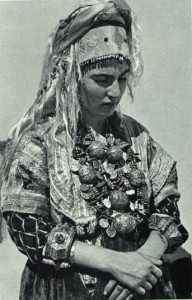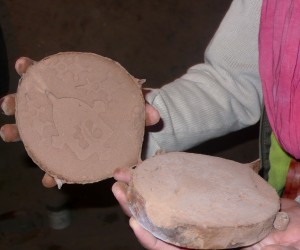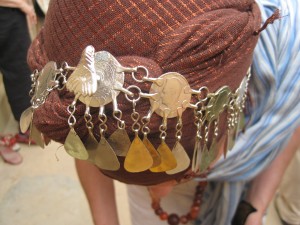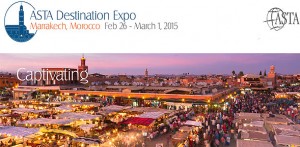FES FESTIVAL OF WORLD SACRED MUSIC 21st EDITION PROGRAM
From 22-30 May 2015, the ancient city of Fes will host the 21st edition of its world famous Sacred Music Festival. This Fes Festival Program offers a full schedule of magnificent musical performances at the Bab Makina, the Bab Boujloud Gate and the Batha Garden & Museum.
Friday 22 May
Bab Makina – 21h00
Opening night
Fes: in search of Africa
From desert wastes to the treasures of ancient palaces, this great musical tale evokes the spirit of African heritage. It takes its inspiration from The History & Description of Africa written by Hassan Al Wazzan (c 1490-1550, known as Leo Africanus or Yuhanna Al Assad in Arabic), as well as highlighting the history of the Tijani Sufi brotherhood. Fes and its medina is the link between Andalusia and Africa.
The performance is a tribute to these great mystical travelers who forged historic links between Morocco and the rest of Africa.
Artists include:
Driss al Maloumi – oud – Morocco
Ballaké Sissoko and Kora Ensemble – Mali
Cape Philharmonic Youth String Quintet – South Africa
Musicians of the Nile – Egypt
Masks of the Moon – Burkina Faso
Doudou N’Diaye Rose Children & the Simb Lion dance – Senegal
Nouhaila Al Kalaa – Fes, Morocco
Coumbane Mint Amartichitt – griot from Mauritania
Chérifa – Tamazight song from the Middle Atlas – Morocco
Malick Sow, Tijani master from Tivouane – Senegal
Babani Koné , Mandinka song – Mali
Moriba Koita, Ngon – Mali
Tamango, dance – USA, French Guyana
Mohammed Bajjedoub – Tijani song – Morocco
Direction & Production: Alain Weber
Lighting: Christophe Olivier, assisted by Gaël Boucault
Mapping: Spectaculaires
Saturday 23 May
Batha Museum – 16h30
Payiz Ensemble – Persian Kurdish Tradition – Iraq
The skin on the lute trembles like living flesh. Jalal Al Din Rumi
The Kurdish soul lies between Persian heritage and Sufi inspiration, in the heart of Iraqi Kurdistan, a land now in crisis. Here its legendary sacred poetry is revived.
Bab Makina – 21h00
First part:
The Brittany Bagad Cap Caval Band and the Lamkartass Ensemble from Tissa – France & Morocco
An encounter between one of the most famous bagpipe bands of Brittany and the folk music of Tissa, in the foothills of Morocco’s Rif mountains.
Second part:
Saber Rebaï – Tunisia
With his refined, attractive voice, Saber Rebaï is one of the most popular singers of the Maghreb. Inspired in his youth by the great performers Mohammad Abd El Wahab, Abd El Kader El Asaly, Wadih Al Safi and Abd El Halim Hafez, Rebaï has become one of the great romantic singers of our time.
Sunday 24 May
Batha Museum – 16h30
Julie Fowlis – Scotland
Singer Julie Fowlis embodies all the beauty and fragility of Scottish Celtic tradition.
Bab Makina – 21h00
African Spirit
In the forest, branches may quarrel but their roots are entwined. Peul proverb
This year the Festival is dedicated to Africa. This concert presents Africa in its quest for identity through the music of Oumou Sangare, symbol of freedom for African women, and through the liberating spirit of African reggae.
Oumou Sangare The amazing Malian diva Oumou Sangare represents African womanhood. Recognised by UNESCO and the FAO (Food & Agriculture Organization of the UN) for her social work, Sangare is one of the brightest stars of Mali in the Wassoullou tradition south of the Niger River.
Tiken Jah Fakoly – Ivory Coast Master of African Reggae along with Alpha Blondy and the late Lucky Dube, Tiken Jah Fakoly is at the height of his career. He sings of the fundamental values of Africa.
Monday 25 May
Batha Museum – 4.30pm
Ballaké Sissoko (kora) and Debashish Battacharya (Indian slide guitar) – Mali & India
Two string instruments and two musical masters together create melodic inspiration for a musical journey from the banks of the Ganges to the Niger River.
Night in the Medina I
Dar Adiyel – 20h00
Eduardo Ramos – Portugal
Specialising in 13th century Arab and Sephardic music, Eduardo Ramos is one of the most well-known artists in Iberian medieval music. With a background in traditional Portuguese music and moving on through rock and Afro-jazz, Ramos gradually came to concentrate on his passion for the musical repertoire of the Sephardic Jews of Portugal and Spain. He plays the oud which allows him to integrate Arab music, too.
Sidi Mohamed Ben Youssef Cultural Complex – 20h00 and 22h30
Masks of the Moon – Bwaba Ritual – Burkina Faso
This extraordinary magical ritual lies at the heart of the griot village of Baraba.
Batha Museum – 21h00
Marassa Premiere – USA, Cuba & France
Omar Sosa, piano, percussion
Tamango, dance
Rodrigo, percussion
Jean de Boysson, visuals
A musical, choreographic and multimedia creation by the famous Cuban pianist Omar Sosa, accompanied by urban tap virtuoso Tamango and Jean de Boysson’s visual creations.
Dar Adiyel – 22h30
The Royal Art of the Kora
Ballaké Sissoko invites more than a dozen musicians to take part in this sumptuous performance featuring the kora, the royal harp of the Mandinka empire.
Tuesday 26 May
Batha Museum – 16h30
Roberto Fonseca and Fatoumata Diawara – Cuba & Mali
An encounter between a young griot and Cuban music, both inherited from Africa.
Night in the Medina II
Dar Adiyel – 20h00
Li Daiguo, Pipa, Cello and Beatbox – China
Young Chinese musician Li Daiguo celebrates nature in his own way : contemplative and inventive, as well as contemporary.
Sidi Mohamed Ben Youssef Cultural Complex – 20h00 and 22h30
Premiere
Wajd
Sonia Mbarek – Tunisia
The famous Tunisian singer presents a special creation for the Festival featuring Sufi poetry.
Batha Museum– 21h30
Diego Al Cigala – Spain
With guest singer Benjamin Bouzaglou
Diego Ramón Jiménez Salazar was born in Madrid into a family of performers. He is now a major voice of Flamenco.
Dar Adiyel 22h30
The Sacred World of Mugham – Azerbaijan
Arzu Alieva, voice
Elchan Mansurov, kamancheh (string instrument)
Malik Mansuro, tar (long-necked string instrument)
Shirzaa Fazalieve, balaban (double-reed wind instrument)
Mugham expressed the varied emotions of exaltation and is found in the great poetic traditions of the Caucasus and Iran. This poetry sings of mountains and palaces, of the desire to be loved, the wretchedness of separation or the inconstancy of a lover, the beauty of the land and the splendour of God.
Wednesday 27 May
Night in the Medina III
Dar Adiyel – 20h00 and 22h30
Sirat Al-Hilali
The epic Hilal story from the Poets of Upper Egypt
Ramadan Hassan and the Musicians of the Nile
These men are very brave and very rich. They are part of the 6000-strong cavalry and are well-armed.
From The History and Description of Africa by Leo Africanus
The Hilal epic is evoked by Hassan Al Wazzan (Leo the African) and is still sung by a few poets in Upper Egypt. It tells of the invasion of the Maghreb during the 10th century by the Beni Hilal and Beni Soleim tribes from the Arab Peninsula. The great emblematic figure of this epic is Abou Zeid Al-Hilali, a warrior and poet (chaer) who, according to the story, was ‘as black as a raven’.
Sidi Mohamed Ben Youssef Cultural Complex – 20h00 and 22h30
Bhagavata Mela Ritual and Sacred Theatre – from Melattur village in Tamil Nadu – India
Words and sense are the body of poetry; rasa [taste] is its essence.
Bharata, René Daumal, Gallimard
This sacred theatre group is making its first trip beyond the Hindu Temple of Melattur. India was home to some of the first ritual theatre, and this popular form of entertainment is inherited from ancient Sanskrit theatre. It celebrates the God Vishnu and his incarnation Krishna, with more than twenty artists.
Batha Museum – 21h30
Paolo Fresu and A Filetta – Sardinia & Corsica
The great masters of Corsican polyphonic voices meet Sardinian trumpet player Paolo Fresu for a Mediterranean musical encounter of deep spirituality.
Thursday, May 28th
Medina Morning – 10h00
Music and tea in private riads
Flamenco voices of Fes
Batha Museum – 16h30
Nabil Benabdeljalil and the Zakharif Ensemble – Morocco
The Zakharif Ensemble is composed of various artists performing with the young Moroccan composer and musicologist Nabil Benabdeljalil. Founded on principles both aesthetic and technical, the group’s diversity is at the heart of their creativity. Of various backgrounds and musical training, they make use of improvisation and variation to recreate ancient Arab music, including the Nahda Egyptian tradition of the long songs of Oum Kalsum.
Bab Makina – 21h00
The Temptations – USA
with Dennis Edwards
Legends of Rhythm & Blues
This acclaimed Motown group reinvents its Rhythm & Blues origin to inspire a whole new generation of musicians around the globe. The impact of soul, blues and gospel has led to African music having a significant influence on all genres of popular music, from raï to rock.
Friday 29 May
Medina Morning – 10h00
Music and tea in private riads
Beihdja Rahal – Algeria
The Andalusian tradition of Algeria
Batha Museum – 16h30
Amen en la voz del Hombre –
Saeta sacred song
from an original idea by Andres Marin
Voices:
Jesus Mendez
Segundo Falcon
Jesus de la Mena
Classical musicians:
Javier Trigos, clarinet
Miguel Maceda, bassoon
Angel Sanchez, oboe
Chamber music with oboe, clarinet, bassoon and three exceptional voices to sing the Saeta of Seville: mystical songs of praise and invocations to God and the Virgin that express deep spiritual feelings.
Through Flamenco romances, peteneras and seguiriyas, the soul of Andalusia and the Sevillian processions are brought to life.
Bab Makina – 21h00
Andalusia
Arabo- Andalous Orchestra of Fes, directed by Mohammed Briouel
with
Beihdja Rahal (Algeria), Sonia Mbarek (Tunisia), Benjamin Bouzaglou, Sanaa Maharati, Nabile Maan, Marouane Haji (all of Morocco)
In the capable hands of master Mohamed Briouel, Andalous music shines forth in the great traditions of the Maghreb and Lebanon.
Saturday 30 May
Medina Morning – 10h00
Music and tea in private riads
Badre Rami – Syria
The Muwashshah tradition of Aleppo
Batha Museum – 16h30
Faada Freddy – Senegal
Gospel revisited by African Rap singer Abdoul Fatah Seck
Body percussion, heartbeats and finger clicks enliven this very African and innovative soul music.
Bab Makina – 21h00
Hussain Al Jasmi – United Arab Emirates
Hussain Al Jasmi has one of the most beautiful voices of the Arab peninsula. He presents a secular and religious repertoire full of the emotion and feeling that has made him so popular in the Maghreb.
For more information about the Fes Festival of World Sacred Music or a Fes Tour
For more information about the Fes Festival of World Sacred Music Morocco’s Imperial Cities, Seaside Resorts,Sahara Desert,Berber villages, A Taste of Morocco, Magical Kasbahs, Ruins & Waterfalls, Absolute Morocco, The Best of Marrakech, Fes, and Ouarzazate







